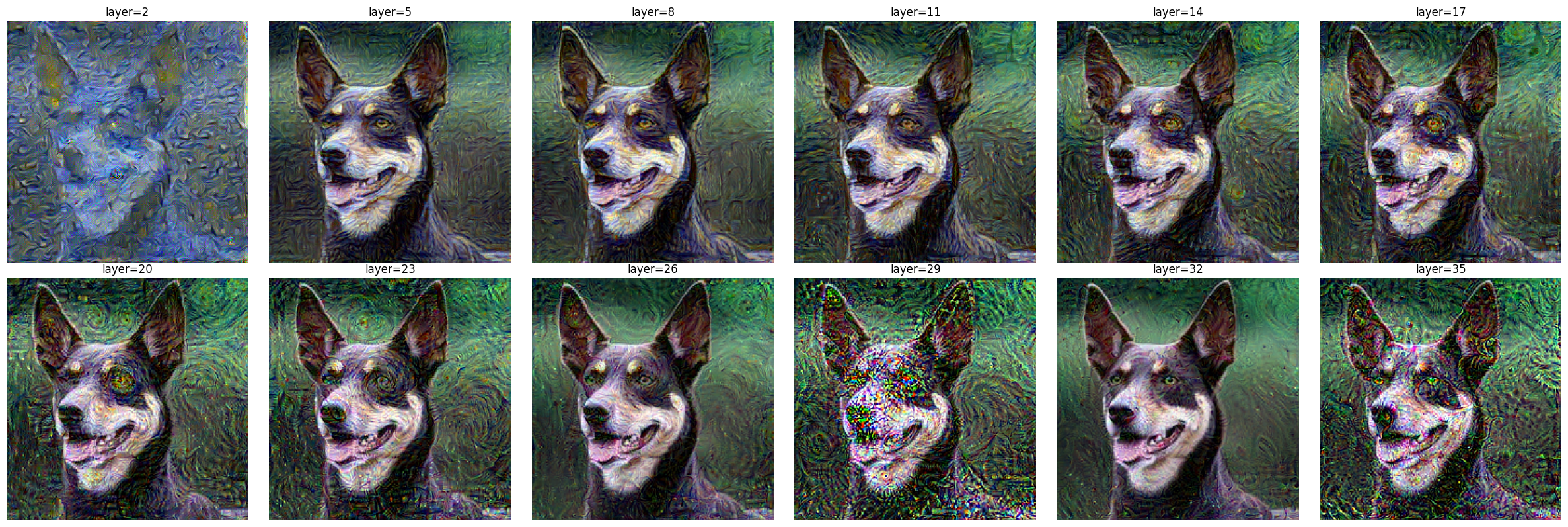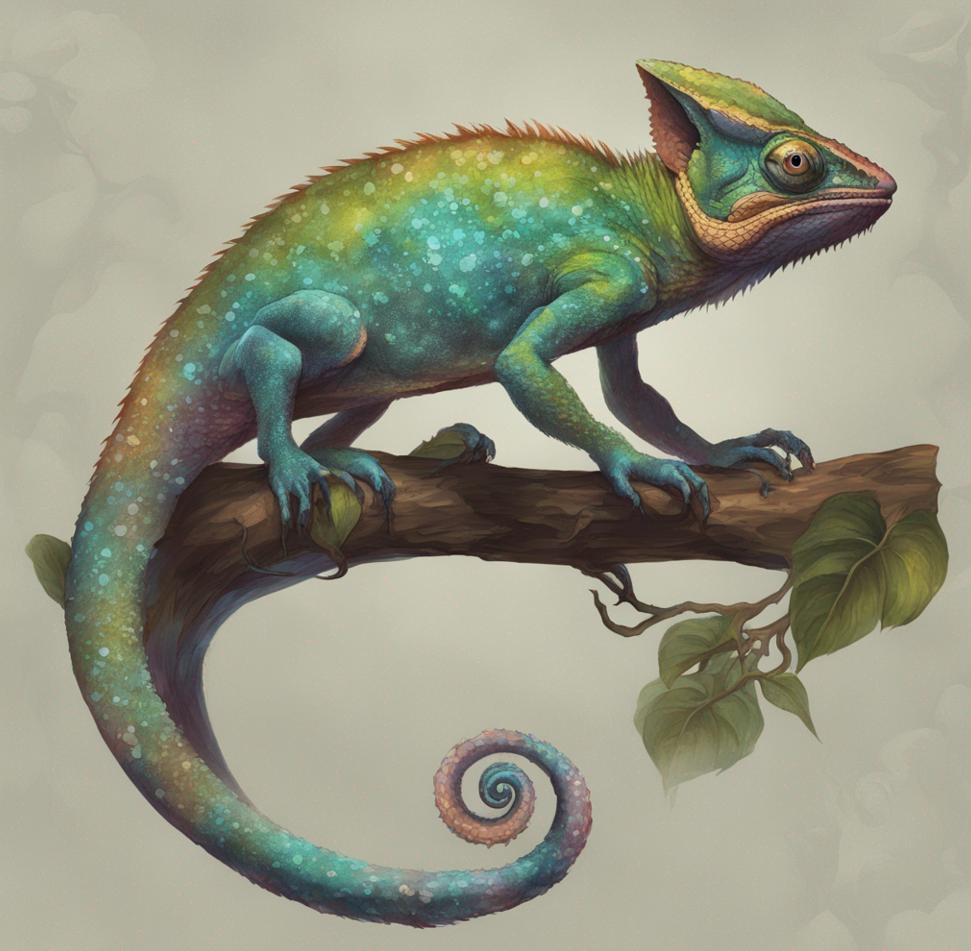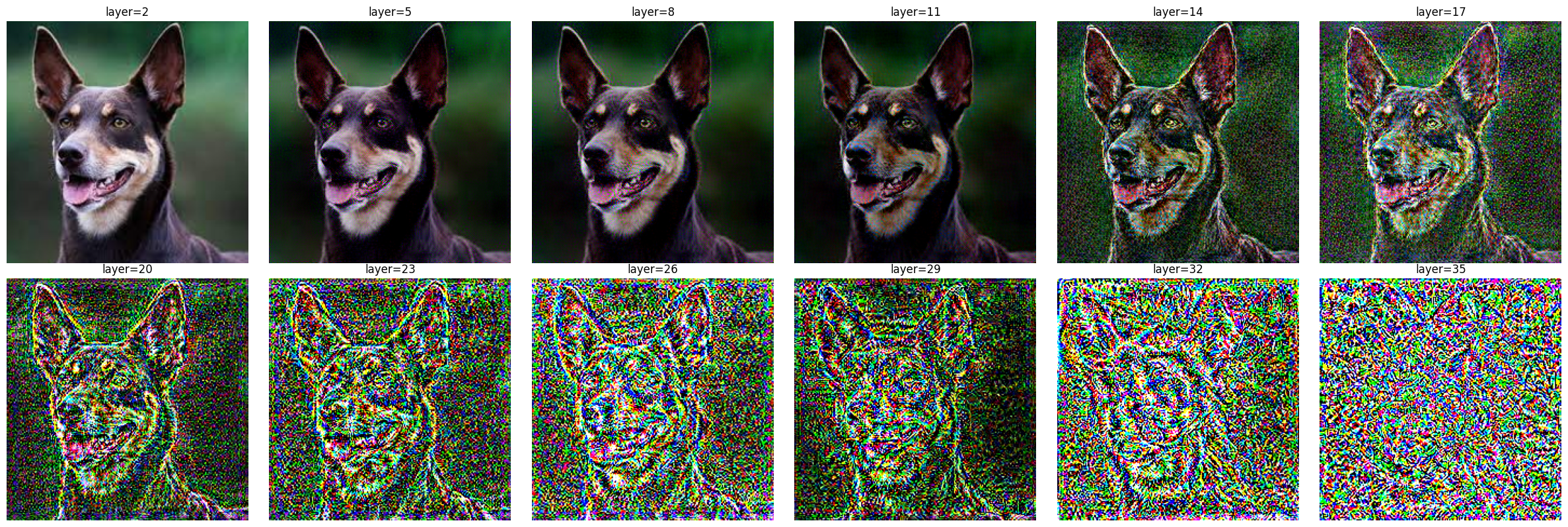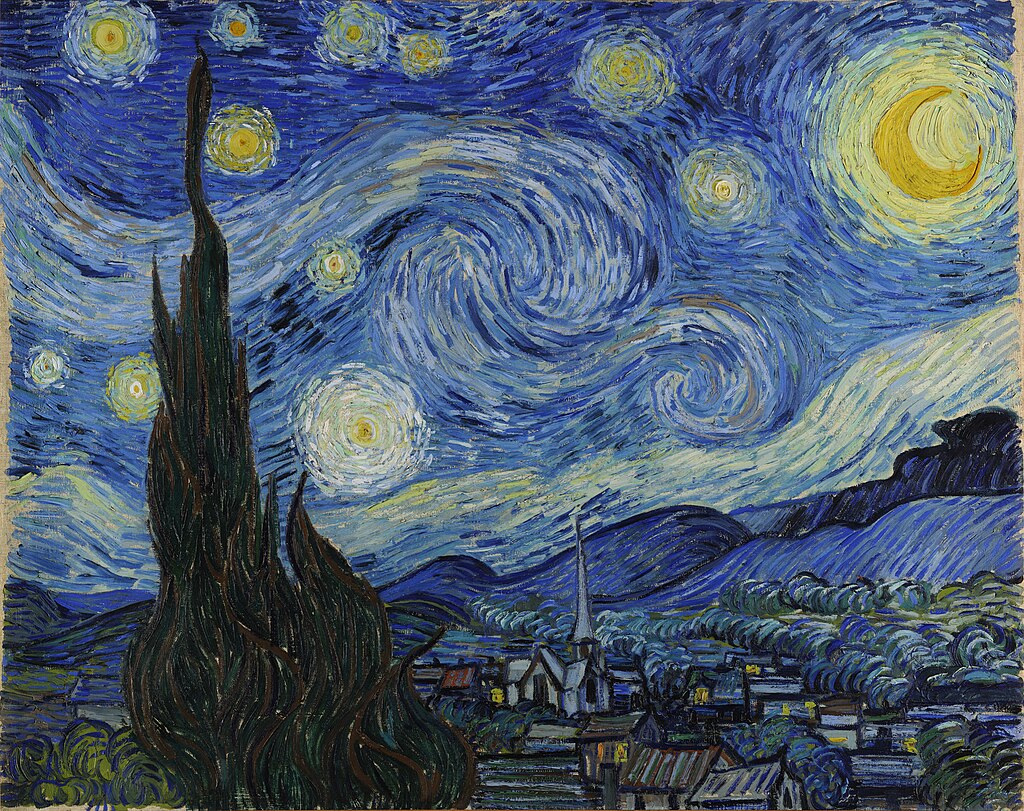Neural Style Transfer
Born of ancient magic, the Chromatic Chameleon prowls the shadows with scales that pulse and shimmer in a dance of arcane radiance. Its form, a living canvas, shifts through the hues of twilight, an elusive guardian draped in spectral energies. Only those with keen senses may glimpse the majestic, ever-changing creature lurking in the mystic realms.
The Quest
Repurpose an image classifier to do style transfer from a donor style image to a receiver content image.
Neural Style Transfer
At a conceptual level, we want to feed the content and style images to the network and snapshot activations values of the inner layers of the image classifier. Merge them. And recreate an image through gradient descent to contain aspects of both at the same time.
Hook into the image classifier
First we need to hook into the classifier to get access to the activation values of the network
def hook(layer, k, mem=None):
if mem is None: mem = {}
def f(module, input, output):
mem[k] = output
layer.register_forward_hook(f)
return mem
def hooked(model):
m = copy.deepcopy(model).to(device)
mem = {}
for layer in range(37):
mem = hook(m.features[layer], layer, mem=mem)
return mem, m
Extract the content: Image Compression
The first step is to extract the features that are relevent to the content image. This could also be reframed as a compression problem. Can we take the activation values from an inner layer of the network and use them to reconstruct the original image.
def apply_content(start, content, layer=content_layer, epochs=10, m=vgg_hooked, mem=vgg_mem):
activations = save_activations(content)
# move to device
start = copy.deepcopy(start.detach()).to(device).requires_grad_()
target = activations[layer].to(device)
m = m.to(device)
m.eval()
# optimizer
optimizer = torch.optim.LBFGS([start])
for epoch in tqdm(range(epochs)):
def closure():
m(start)
predicted = mem[layer]
loss = F.mse_loss(predicted, target)
optimizer.zero_grad()
loss.backward()
return loss
optimizer.step(closure)
start.data = torch.clip(start, 0.0, 1.0).data
return start
The earlier layers are fairly big and it’s easy to reconstruct a good version of the original image, but later ones are much smaller and a lot of the details are lost. “Creating progressively noisier and noisier images.
Extract the style: Gram matrix
For the style we do not want to recreate the original image. We only care about its essence. We care about how features relate to each other. And for that we compute the Gram matrix (aka. covariance, aka. correlation) between the channels at a given layer.
The idea is to capture the relation between features of a painting. For example the yellow stars and moon are correlated with convex radiant shapes, while the blue are swirly spirals, and the vegetation is weavy.
The similarity between two channels is computed by taking their dot product. We can do it for all pairs by doing a matrix multiplication Channels @ Channels.T.
def gram(layer):
n_channel = layer.shape[1]
layer = layer.view(n_channel, -1)
layer = layer / (layer.norm(dim=1, keepdim=True) + 1e-8) # normalize to 1 and avoid division by 0
res = layer @ layer.T
return res
We then chose a combination of layers to extract the style from (e.g. style_layers = [1, 6, 11, 20, 29]). Keeping in mind that very firsts layers have color information, early layers basic shapes, and more and more composit patterns.
def apply_style(start, style, layers=style_layers, epochs=10, m=vgg_hooked, mem=vgg_mem):
activations = save_activations(style)
# move to device
start = copy.deepcopy(start.detach()).to(device).requires_grad_()
targets = [gram(activations[layer]).to(device) for layer in layers]
m = m.to(device)
m.eval()
# optimizer
optimizer = torch.optim.LBFGS([start])
for epoch in tqdm(range(epochs)):
def closure():
m(start)
predictions = [gram(mem[layer]) for layer in layers]
losses = [F.mse_loss(predicted, target) for predicted, target in zip(predictions, targets)]
loss = torch.stack(losses).sum()
optimizer.zero_grad()
loss.backward()
return loss
optimizer.step(closure)
start.data = torch.clip(start, 0.0, 1.0).data
return start
Let’s have a look at some style extractions from Van Gogh’s Stary Night painting applied to a dog picture.

Putting it together
Now we can mix both the re-construction of the content, and the essence of the style together. Also known as neural style transfer.
style_layers = [1, 6, 11, 20, 29]
content_layer = 28
def style_transfer(start, content, style, scaler=1., content_layer=content_layer, style_layers=style_layers, epochs=10, m=vgg_hooked, mem=vgg_mem):
content_activations = save_activations(content)
style_activations = save_activations(style)
# move to device
start = copy.deepcopy(start.detach()).to(device).requires_grad_()
content_target = content_activations[content_layer].to(device)
style_targets = [gram(style_activations[layer]).to(device) for layer in style_layers]
m = m.to(device)
m.eval()
# optimizer
optimizer = torch.optim.LBFGS([start])
for epoch in tqdm(range(epochs)):
def closure():
m(start)
# content loss
content_predicted = mem[content_layer]
content_loss = F.mse_loss(content_predicted, content_target)
# style loss
style_predictions = [gram(mem[layer]) for layer in style_layers]
style_losses = [F.mse_loss(predicted, target) for predicted, target in zip(style_predictions, style_targets)]
style_loss = torch.stack(style_losses).sum()
# merge losses
loss = content_loss + scaler * style_loss
optimizer.zero_grad()
loss.backward()
return loss
optimizer.step(closure)
start.data = torch.clip(start, 0.0, 1.0).data
return start


Good artists borrow, great artists steal, Neural networks compute Gram matrix.
The code
You can get the code at https://github.com/peluche/neural-style-transfer


